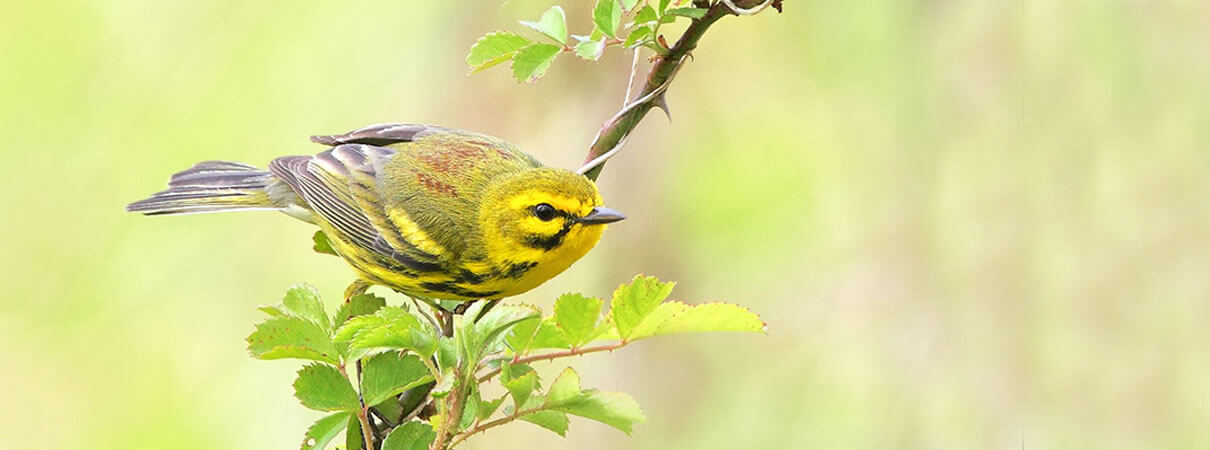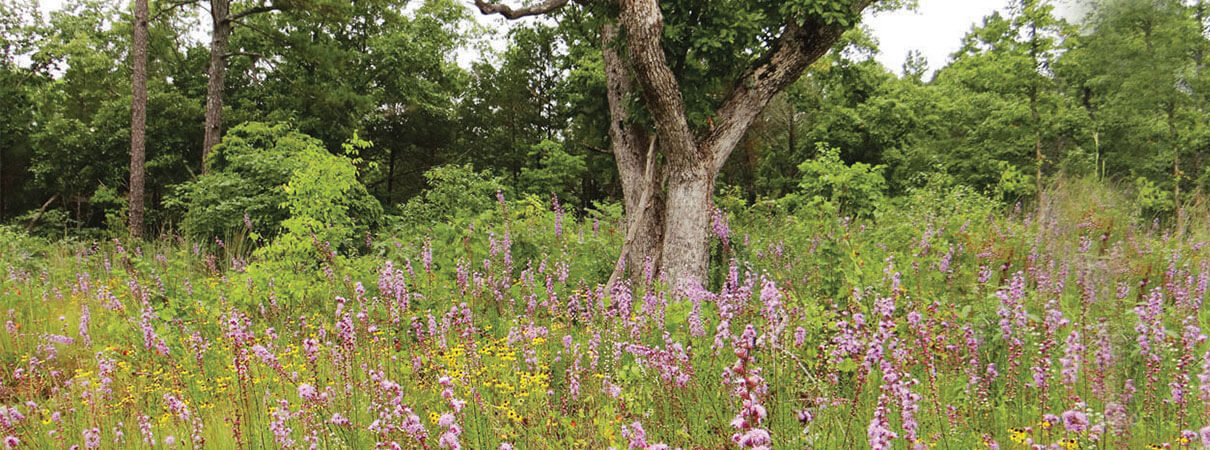Central Hardwood Joint Venture Restores the Wonder of Glades
I can't help but feel happy when I walk in the glades. Maybe it's the great diversity of native grasses and flowering plants in these special open patches. Glades punctuate forests in Missouri, usually on rocky, dry, south- and west-facing slopes and hilltops. As I hike and take stock of how our habitat restoration work is progressing, I frequently see the eye-popping scarlet of Indian Paintbrush, whites and violets of Shooting Star and blazing stars, Pale Purple and Yellow Coneflowers, and other plants with fun names like supplejack, palafoxia, and Gum Bumelia.
My other senses are tickled as well. Just setting foot on a diminutive calamint is a real treat, as its lovely, minty scent hovers in the air long enough to fully delight. The glade bird community is an interesting mix, providing a feast for the ears during spring and early summer. That's when I hear the robin-like song of Summer Tanagers in the wide canopies mingling with the repeated renderings of early-successional species, including Prairie Warblers, with their ascending “zee, zee, zees,” and Blue-winged Warblers, with their dropping “bee-buzzes.”

Prairie Warbler. Photo by Dan Behm
Whenever possible, I get out to glades. Thankfully, it's part of my job as ABC's Central Hardwoods Joint Venture (CHJV) Coordinator. Migratory Bird Joint Ventures are cooperative, regional partnerships that work to conserve habitat, primarily for the benefit of birds in need of conservation attention. There are 22 joint ventures across the United States and Canada. Mine is but one of these, spanning portions of eight states, from Indiana to Oklahoma.
Our work is guided by a management board of representatives from three federal and four state wildlife agencies and four nongovernmental organizations, including American Bird Conservancy. The CHJV partnership works to restore high-priority bird populations, including those of the Red-headed Woodpecker and Prairie Warbler, by improving and restoring the native habitats needed to support them. Along the way, many other species benefit from these efforts. Of the habitat types, I have to say that glades and open woodlands have become my favorites.

A restored glade habitat in bloom with native blazing stars. Photo by Susan Farrington
Glade-woodland complexes were once relatively common in the Central Hardwoods region, but many glade landscapes have been degraded by decades of fire suppression, which allowed Eastern Redcedar and other dense, woody vegetation to invade. Glades occur in patches from tens to thousands of acres, interspersed with more densely forested patches on lower slopes and in moist bottomlands.
The CHJV and its broad-scale coordination is key to restoring glade habitats. That's because habitat restoration work can more easily be carried out at appropriate scales by state and federal land-managing agencies on large public land holdings, alone or in concert with our other partners and surrounding private landowners.
Over the course of the last year, our partners collectively reported over 193,000 acres of habitat improvements for woodland birds and, to a lesser extent, birds of the grasslands. Of these, 136,000 acres were treated with tree thinning and/or prescribed fire, helping, in large part, to restore those glades and open woodlands I've come to hold dear.
 | Jane Fitzgerald is an ABC Vice President and the Central Hardwoods Joint Venture Coordinator. |


















































